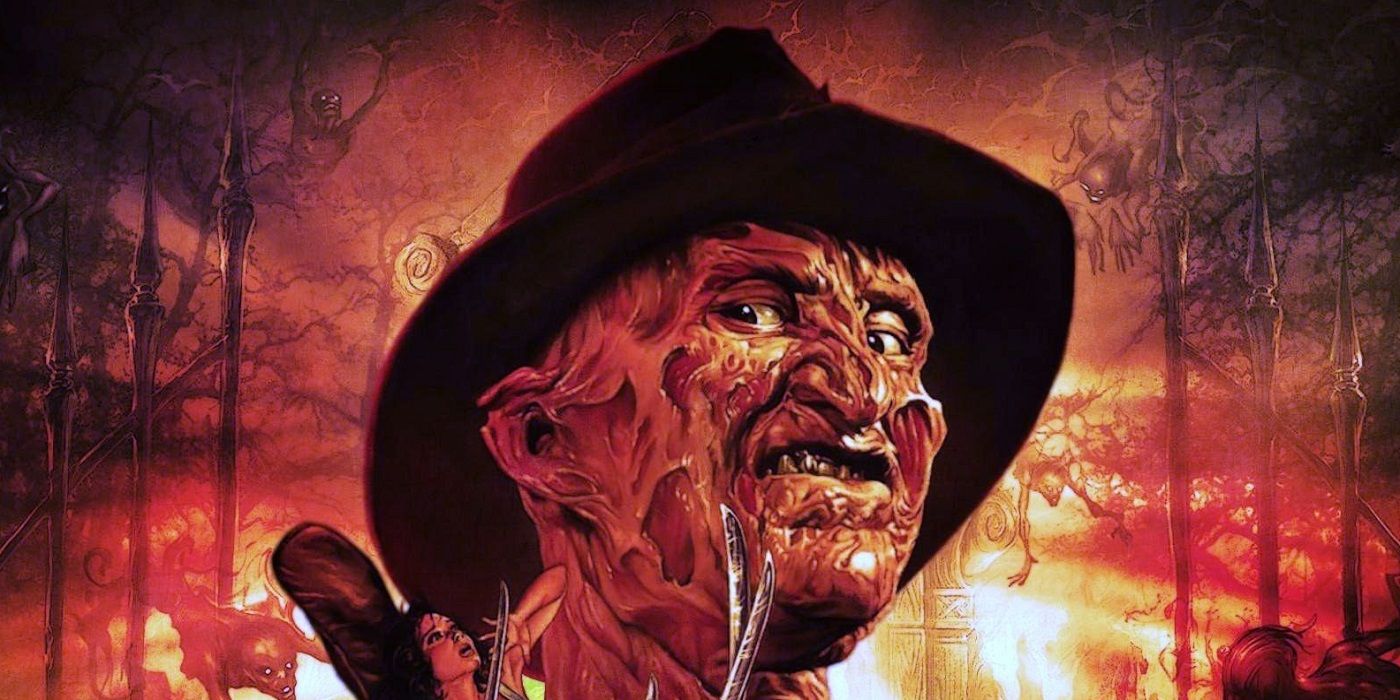When horror movie characters take the leap from the silver screen to the pages of a comic book, the results are usually a mixed bag. More often than not the qualities that make a villain like Michael Myers or Jason Voorhees chilling on film just don’t seem to translate over to the new medium. But there are some terror icons who have flourished in this unique style of storytelling, entering new realms of creative debauchery that never could have been achieved on camera. In 1989 Marvel launched Freddy Krueger’s A Nightmare On Elm Street, an ongoing series featuring everyone’s favorite wise-cracking dream demon, and the results were terrifying.
Click the button below to start this article in quick view.
The series takes place a few years after the events of Dream Warriors, the film franchise’s third installment. We meet a young woman named Alison who, like so many other Springwood teens before her, is being terrorized by Krueger in her dreams. She’s a fighter, having bested the burnt-faced goon a few times already, but has been institutionalized by her parents and is getting dangerously close to a final meeting with the business-end of Freddy’s razor glove. Enter Dr. Juliann Quinn, a gifted psychologist and one of the original Elm Street children. Having moved to New York City shortly after her parents assisted in the murder of Krueger back during his “Springwood Slasher” years, Quinn has returned to confront the sins of her parents. She soon encounters Alison and the two team up to try and take Freddy out once and for all.
What’s immediately fascinating about Marvel’s Elm Street series is how it’s able to take Krueger’s ability to manipulate people’s dreams and do things with those set pieces that could never be done on film, either due to budgetary restraints or questions of taste. Its imagery is intense: the burnt corpses of children whisper warnings to Dr. Quinn before crumbling to dust before her; Alison’s own intestines attack her during a medical procedure and, after fending off their attack, she uses them to strangle Freddy; the two heroines find themselves sinking into the literal grey matter of Krueger’s brain in the first issue’s climactic final page. All of these dark imaginings are brought to life in the beautifully detailed black and white illustrations of Tony DeZuniga (Jonah Hex) and Alfredo Alacala (Fantastic Four). Their work is by far the most memorable part of the series, showcasing a refined realistic style that wouldn’t be seen again in further adaptations.
Meanwhile, series writer Steve Gerber (Howard The Duck, Man-Thing) does a tremendous job of playing with the Elm Street mythos and, in particular, Freddy’s backstory. Normally these deeper explorations into a villain’s origins can be a little tedious, but Gerber does some really interesting stuff here. For instance, he attempts to explain Krueger’s power to travel through dreams by linking it to the killer’s early inability to distinguish between fantasy and reality. We learn that, as a young man, Freddy would escape into his mind and dream of new worlds where he could enact his twisted urges. When those impulses became too strong to resist, he eventually started acting them out in reality as the Springwood Slasher. Then, after he was burnt alive by the parents of Elm Street, he was somehow able to tap into the dreamworld thanks to his early mastering of his own fantasies. While maybe a bit too vague (this explanation might have been fleshed out more if the series had continued) it’s at least more interesting than the “Freddy gets possessed by Dream Demons” version we see in Nightmare 6.
Though the first two issues of Freddy Krueger’s A Nightmare On Elm Street were very successful (they were being published at the high of the franchise’s popularity, back when you could find everything from Krueger dolls and lunchboxes to the infamous “Freddy Hotline” 900 number) Marvel pulled the plug on the series, fearing they would be targeted by the fanatical parent groups that were so prevalent during the Satanic Panic years of the 1980s. There were other Elm Street comic book adaptions released as the years went by, but while some were certainly entertaining, none matched the dark tone of the original.
